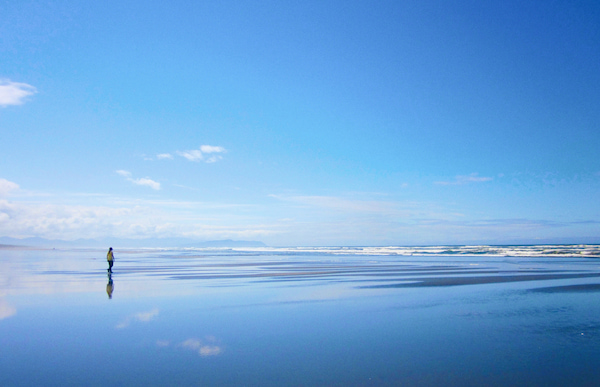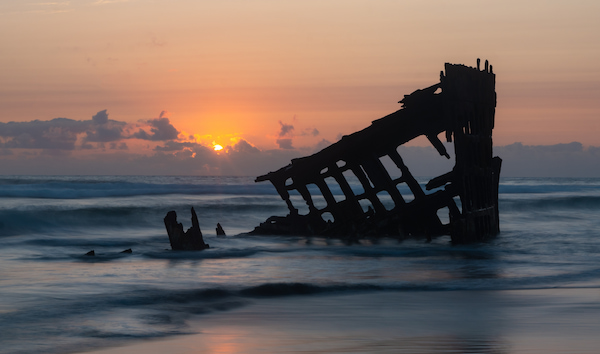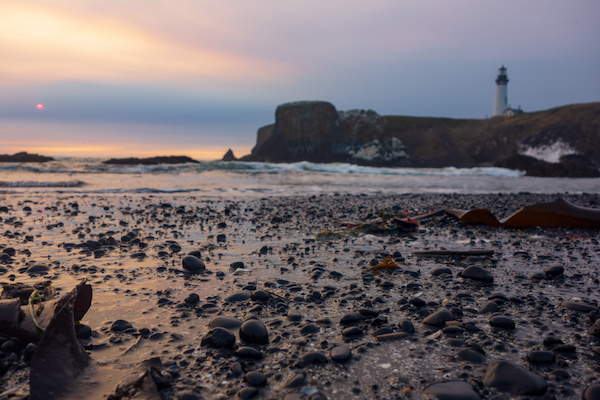
Adventures through Oregon Coast History: A Lighthouses, Shipwrecks & Lewis and Clark’s Journey
Updated. Nov 7, 2025
Ever wonder where Lewis and Clark first glimpsed the Pacific, or why hundreds of ships met their fate along this dramatic coastline?
The Northern Oregon Coast, between Astoria and Cannon Beach, features nationally significant Lewis and Clark sites, visible shipwrecks from the Graveyard of the Pacific, and a rich indigenous heritage.
The best part? You can walk to the Lewis and Clark Salt Works from your Gearhart rental and reach every major historical site within 30 minutes.
Summary: It’s best to stay in Gearhart for walking distance access to Lewis and Clark Salt Works, plus easy drives to Fort Clatsop, Astoria’s maritime museums, and Graveyard of the Pacific shipwrecks. That’s nine major historical sites within a 25-minute drive from your accommodation.
Historic Sites by Town: Your Northern Oregon Coast History Trail
Here’s your perfect road trip itinerary, organized by town so you can trace history from north to south with Gearhart as your home base.
Astoria History(25 Minutes North of Gearhart)

Founded in 1811 as a fur trading post, Astoria stands as the oldest American settlement west of the Rockies, featuring Victorian architecture, the Columbia River Maritime Museum, and the iconic Astoria Column overlooking where the Columbia River meets the Pacific.
Just 25 minutes north of Gearhart, downtown Astoria showcases over 200 Victorian-era buildings perched on hillsides. The Columbia River Maritime Museum houses the region’s most comprehensive maritime collection. It was expanded in 2023 to include immersive exhibits about Coast Guard rescues and commercial fishing heritage.
The Astoria Column offers 360-degree views spanning two states after climbing 164 steps, featuring murals that depict Lewis and Clark’s arrival and the early settlement history.
Gearhart & Seaside(Your Home Base)
The Lewis and Clark Salt Works in Seaside, located within walking distance of Gearhart accommodations, marks where expedition members produced essential salt for their return journey in January-February 1806, making this area central to understanding their Pacific Coast winter.

If you stay in Gearhart, you’ll be literally steps from where history happened. The Salt Works reconstruction sits just a 15-20 minute walk from most Gearhart rentals. Five expedition members built a stone cairn and boiled seawater in iron kettles around the clock. The historic Seaside Promenade, built in 1920, offers another slice of North Oregon Coast history as one of the West Coast’s first beach resort destinations.
From Gearhart Beach, you can spot Tillamook Rock Lighthouse (nicknamed “Terrible Tilly”) perched one mile offshore. It was built in 1881 under dangerous conditions (with one worker swept to his death) before completion. This lighthouse operated until 1957 and creates dramatic sunset photo opportunities.
Cannon Beach & Lewis and Clark(15 minutes south)

Photo credit: Unsplash
While Lewis and Clark’s main party first viewed the Pacific near present-day Astoria in November 1805, a scouting party traveled south to Cannon Beach in January 1806 to procure whale blubber from local Tillamook people, marking this area’s significance in expedition history.
When a whale beached near present-day Cannon Beach in January 1806, Clark led a group (including Sacagawea, who insisted on seeing the ocean and whale) south from Fort Clatsop.
Ecola State Park preserves these trails today, with the Clatsop Loop Trail offering the same coastal views Clark called “the grandest and most pleasing prospects” in his journals. Haystack Rock, the 235-foot sea stack, served as a landmark for indigenous peoples and maritime navigation for millennia.
Fort Clatsop
Fort Clatsop, located 15 miles south of Astoria (20 minutes from Gearhart), served as the Corps of Discovery’s winter quarters from December 1805 to March 1806, where they weathered 106 days of nearly constant rain while preparing for their return journey.
After reaching the Pacific in November 1805, the Corps chose a site near present-day Astoria for winter shelter. Expedition members built Fort Clatsop in six weeks, completing it by Christmas 1805. Clark’s journal records rain on all but 12 days during their stay, with clothing rotting and everyone battling fleas and dampness.
Despite hardships, Lewis documented 178 plants and 122 animals, many of which were previously unknown to science. Today’s replica, rebuilt after a 2005 fire, features park rangers demonstrating period skills like fire-starting and musket loading. Fort Clatsop became part of Lewis and Clark National Historical Park in 2004, attracting over 250,000 annual visitors.
What Is the Graveyard of the Pacific, and Where Can You See Shipwrecks?

The Graveyard of the Pacific refers to the treacherous stretch where the Columbia River meets the ocean, claiming over 2,000 ships and 700 lives since the late 1700s due to shifting sandbars, powerful currents, and violent storms.
The Columbia River Bar creates some of North America’s most dangerous maritime conditions. The most accessible shipwreck is the Peter Iredale at Fort Stevens State Park (25 minutes from Gearhart). This four-masted British ship ran aground in October 1906, with its rusted skeleton still partially buried in sand, creating one of the world’s most photographed shipwrecks.
Fort Stevens itself guarded the Columbia River entrance from the Civil War through WWII. It’s the only mainland U.S. military installation bombed by Japan during WWII (June 1942), with explorable gun batteries and bunkers today.
How Many Lighthouses Can I Visit on the Oregon Coast?

Nine historic lighthouses operate along Oregon’s 363-mile coastline, with three significant beacons accessible from Gearhart: Tillamook Rock Lighthouse (viewable offshore), Yaquina Head Lighthouse (90 minutes south), and Cape Meares Lighthouse (75 minutes south).
Tillamook Rock Lighthouse epitomizes Oregon’s harsh maritime reality. Construction began in 1879, but master mason John Trewavas fell to his death before work officially started. Workers carved a foundation while waves crashed overhead, creating a lighthouse that operated from 1881 to 1957.
If you want to tour a lighthouse, you can visit Yaquina Head Lighthouse, 90 minutes south. At 93 feet tall, it’s Oregon’s tallest lighthouse, operating since 1873 with guided tours up 114 steps for panoramic ocean views. The Bureau of Land Management offers tours through this Outstanding Natural Area featuring excellent tide pools.
What Native American Tribes Lived on the Northern Oregon Coast?
The Clatsop, Tillamook, and Chinook peoples inhabited the Northern Oregon Coast for over 10,000 years before European contact, developing sophisticated cultures based on salmon fishing, cedar craftsmanship, and extensive trade networks throughout the Pacific Northwest.
The Clatsop people lived around the mouth of the Columbia River and in the present-day areas of Seaside and Gearhart. The Tillamook occupied areas from Tillamook Head south to the Salmon River. These permanent villages featured complex social structures and technologies perfectly adapted to coastal life. Salmon formed the foundation of their economies, with intricate fishing techniques and preservation methods sustaining year-round communities.

When Lewis and Clark arrived in November 1805, the Clatsop proved essential to the survival of their expedition. They traded food and provided geographical knowledge. Today, the Lewis and Clark National Historical Park features exhibits created with descendants of these peoples. The Smithsonian has recently digitized extensive collections of Clatsop and Chinook artifacts.
Planning Your Oregon Coast History Tour: Where Should I Stay?
We’d recommend staying in Gearhart for several reasons. It’s in a central location, within walking distance of Lewis and Clark Salt Works, and offers easy access to Fort Clatsop and Astoria’s maritime museums.
Additionally, it offers peaceful beachfront accommodations and more affordable rates compared to hotels in Cannon Beach or Astoria. And there is no shortage of things you can do in Oregon during your stay.
Unlike Cannon Beach, where oceanfront hotels run $300-500 per night, Gearhart offers spacious vacation rentals with full kitchens and ocean views at more reasonable rates.
Ready to walk the same beaches Lewis and Clark explored and touch century-old shipwrecks for yourself? Explore our Gearhart vacation rentals and start your journey through time along the Pacific Northwest’s most storied coastline today.
Frequently Asked Questions About North Oregon Coast History
The Corps of Discovery first viewed the Pacific on November 7, 1805, from present-day Cape Disappointment (now Washington State) at the Columbia River mouth. However, they explored extensively around Astoria and south to Cannon Beach during their winter stay.
Yes, the Peter Iredale shipwreck at Fort Stevens State Park remains the most accessible wreck, with its rusted iron skeleton visible on the beach year-round, just 25 minutes from Gearhart.
Start at Fort Clatsop (a 20-minute drive from Gearhart) for a morning tour, then visit the Salt Works in Seaside (accessible on foot from Gearhart). In the afternoon, drive to Ecola State Park and Cannon Beach, which can be visited in 6-8 hours.
Spring (April-May) and fall (September-October) offer smaller crowds at historical sites, comfortable weather for exploring, and special Lewis and Clark commemoration programs at Fort Clatsop.
Gearhart offers the best location with walking distance to the Salt Works, just 20 minutes to Fort Clatsop, and easy access to all major expedition sites along the Northern Oregon Coast.
Astoria, founded in 1811 as a fur trading post, is the oldest American settlement west of the Rockies and sits just 25 minutes north of Gearhart.
